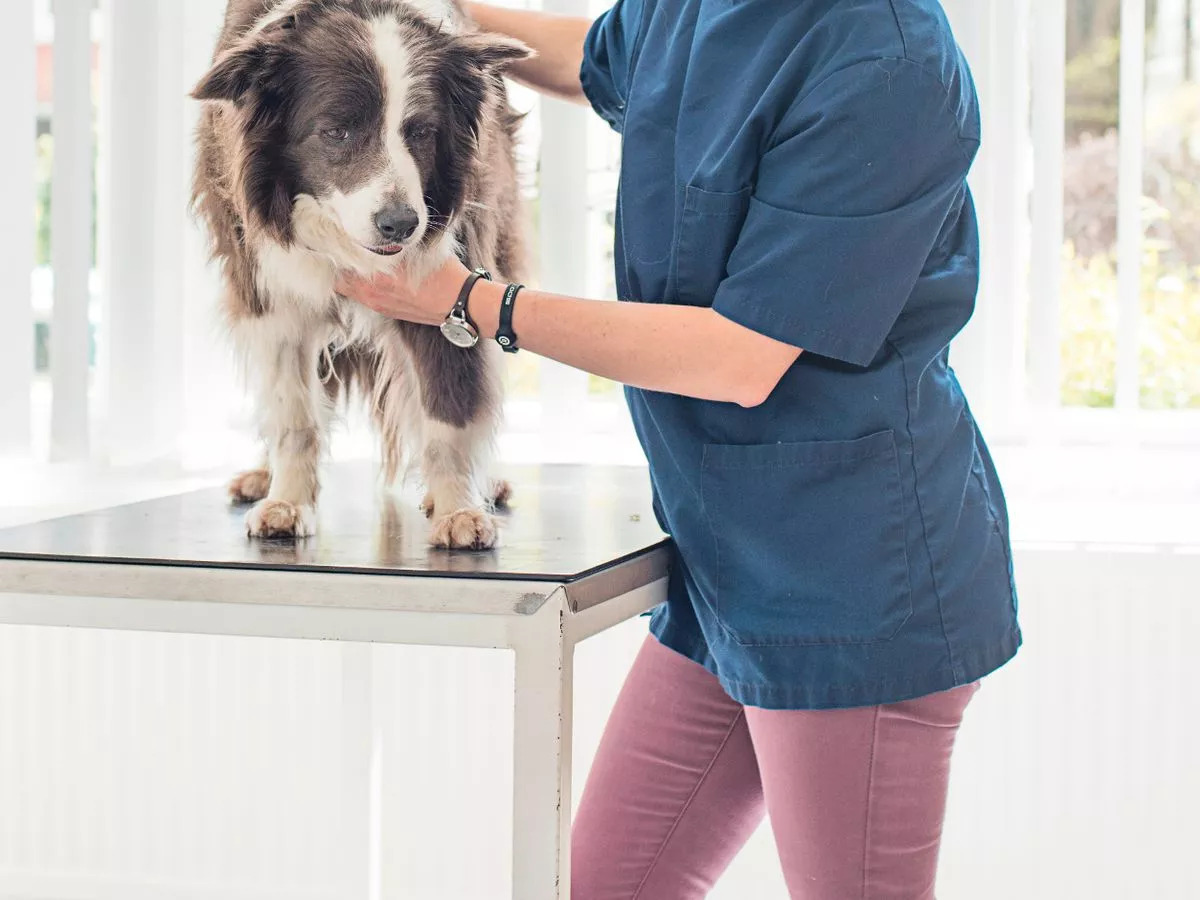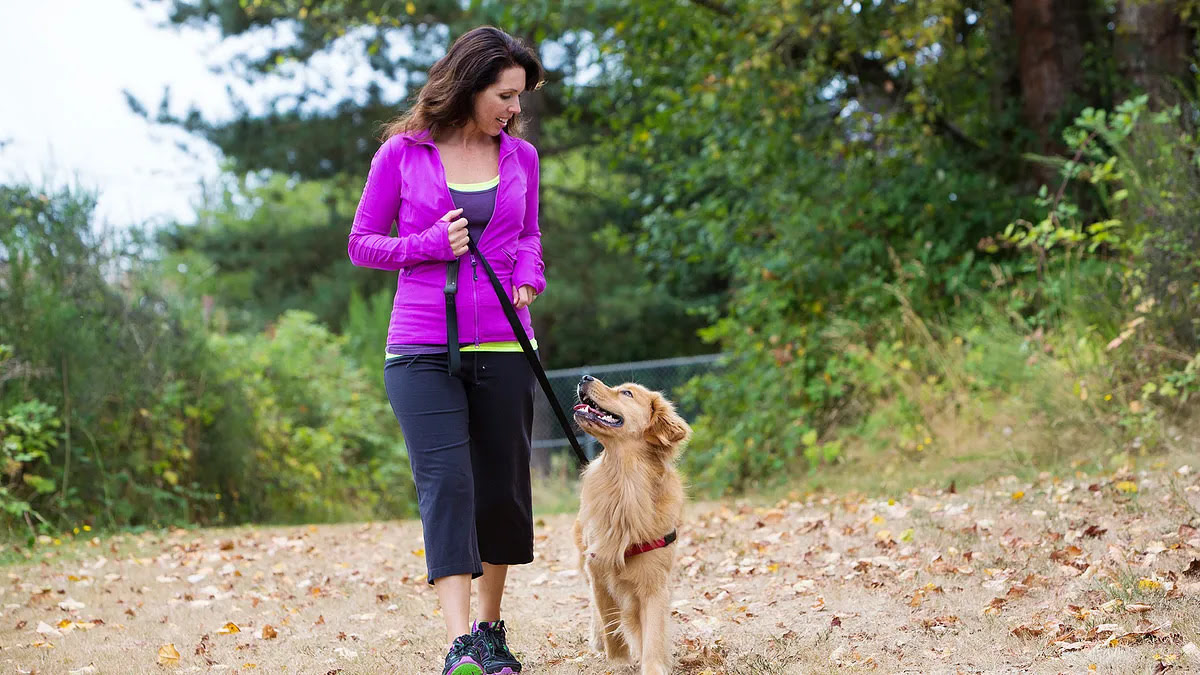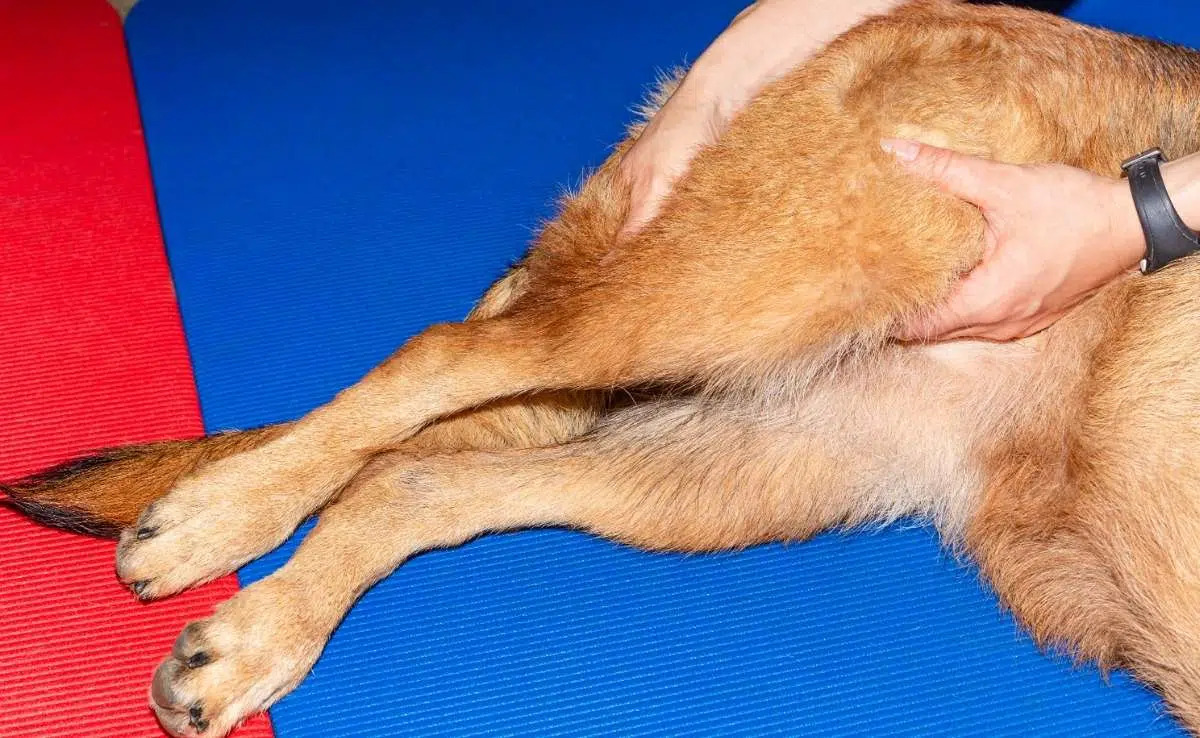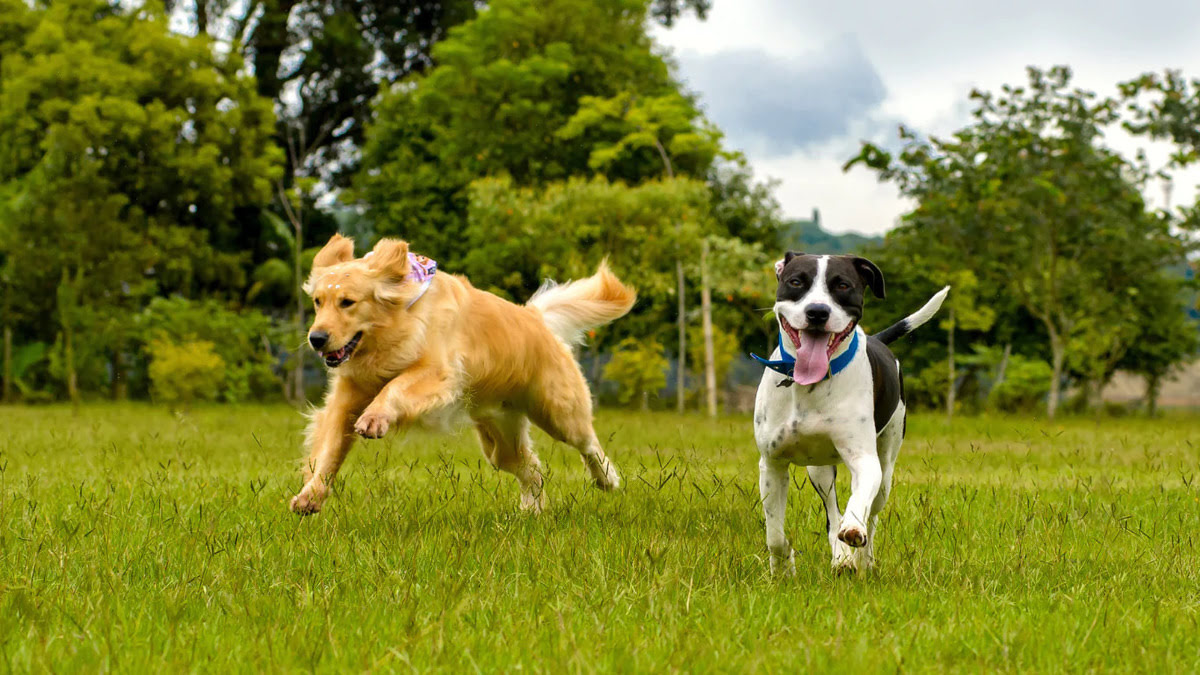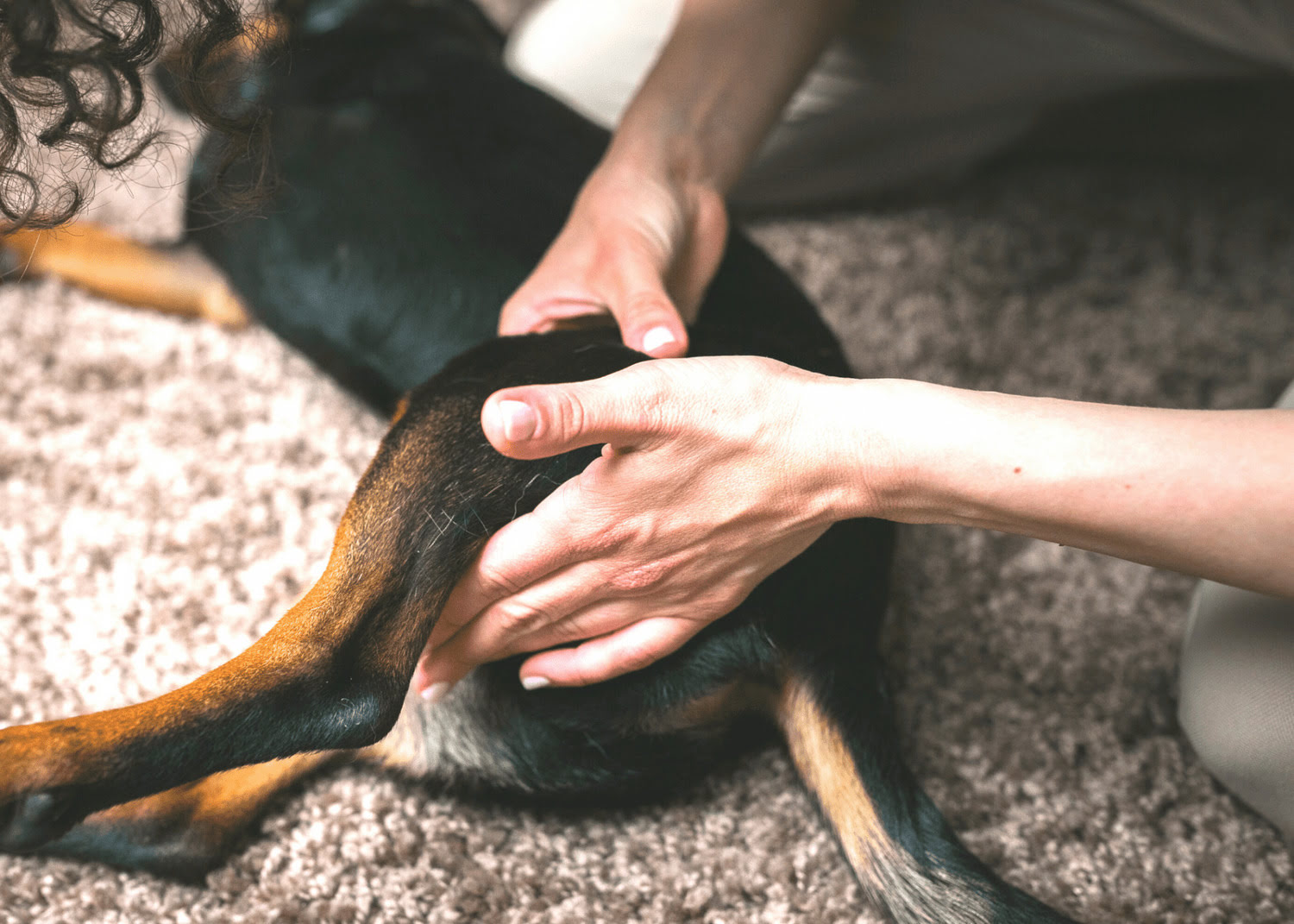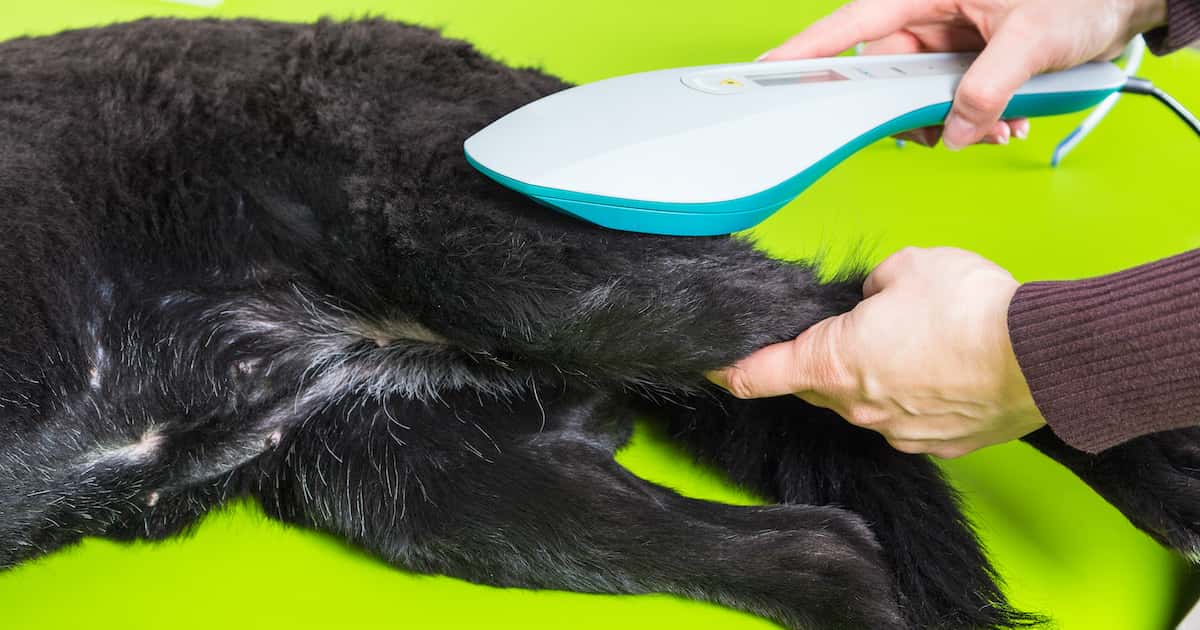Home>Health & Wellness>Common Health Issues>Muscular and Joint Health>Exercises For Dogs With Arthritis
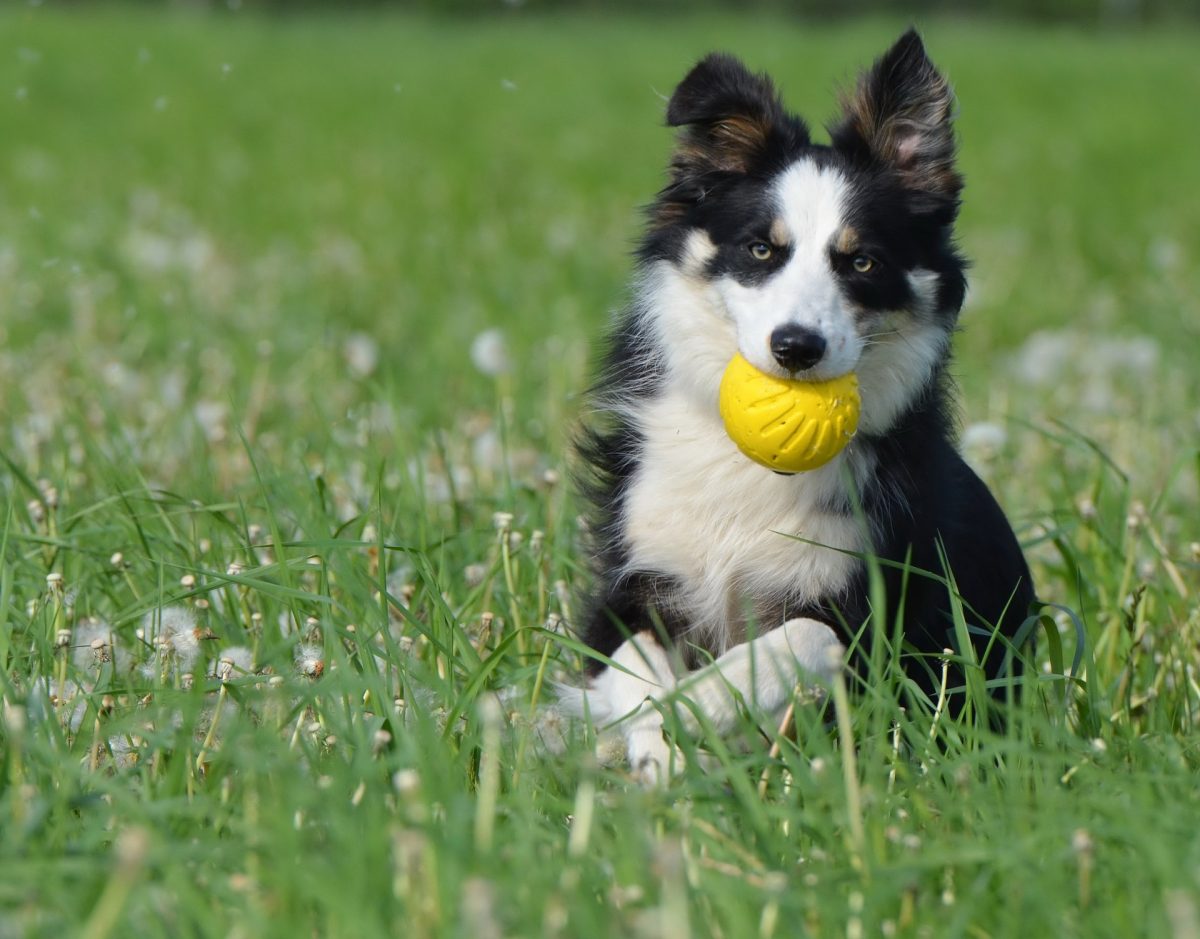

Muscular and Joint Health
Exercises For Dogs With Arthritis
Modified: February 21, 2024
Help your dog maintain muscular and joint health with these effective exercises for arthritis. Keep your furry friend active and comfortable with these beneficial workouts.
(Many of the links in this article redirect to a specific reviewed product. Your purchase of these products through affiliate links helps to generate commission for Pawsomeoldies.com, at no extra cost. Learn more)
Table of Contents
Introduction
Arthritis is a common condition that affects not only humans but also our beloved canine companions. Just like in humans, arthritis in dogs can cause discomfort, stiffness, and reduced mobility, impacting their overall quality of life. As responsible pet owners, it's crucial to understand the challenges faced by our furry friends with arthritis and explore ways to alleviate their discomfort.
In this comprehensive guide, we will delve into the world of canine arthritis and discover the benefits of incorporating exercise into the lives of dogs dealing with this condition. By understanding the importance of exercise and learning about the various types of exercises suitable for arthritic dogs, we can provide our four-legged friends with the care and support they need to lead fulfilling and active lives.
Join us as we embark on a journey to uncover the power of exercise in managing arthritis in dogs, and gain valuable insights into the types of exercises that can make a positive impact on their well-being. Let's take a proactive approach in enhancing the lives of our furry companions by embracing the therapeutic potential of tailored exercise routines for dogs with arthritis.
Read more: How To Exercise Your Senior Dog
Understanding Arthritis in Dogs
Arthritis, a term derived from the Greek words "arthro," meaning joint, and "itis," meaning inflammation, refers to a group of conditions characterized by inflammation and stiffness in the joints. This debilitating condition is not limited to humans; it also affects our canine companions. In dogs, arthritis can manifest in various forms, including osteoarthritis, rheumatoid arthritis, and septic arthritis, each with its own distinct causes and symptoms.
Osteoarthritis, the most common type of arthritis in dogs, typically develops as a result of wear and tear on the joints over time. This wear and tear can be attributed to factors such as aging, genetics, obesity, joint instability, or previous injuries. As the protective cartilage within the joints deteriorates, the bones may begin to rub against each other, leading to pain, inflammation, and reduced mobility.
Rheumatoid arthritis, although less common in dogs than in humans, is an autoimmune condition that occurs when the immune system mistakenly attacks the body's own tissues, including the joints. This can result in chronic inflammation, joint damage, and discomfort for affected dogs.
Septic arthritis, on the other hand, is caused by a bacterial or fungal infection within the joint. This type of arthritis can lead to severe pain, swelling, and lameness in dogs, requiring prompt medical attention to prevent further complications.
Regardless of the specific type, arthritis in dogs can significantly impact their overall well-being. Common signs of arthritis in dogs include stiffness, reluctance to engage in physical activities, limping, difficulty rising from a lying position, and behavioral changes such as irritability or withdrawal.
Understanding the nuances of arthritis in dogs is crucial for pet owners, as it enables them to recognize the symptoms early on and seek appropriate veterinary care. By gaining insight into the underlying causes and manifestations of arthritis in dogs, pet owners can take proactive measures to support their furry companions and enhance their quality of life.
In the next sections, we will explore the benefits of exercise for dogs with arthritis and delve into the various types of exercises tailored to address the specific needs of arthritic dogs. Through this knowledge, pet owners can play a pivotal role in managing their dogs' arthritis and promoting their physical and emotional well-being.
Benefits of Exercise for Dogs with Arthritis
Regular exercise plays a pivotal role in the overall well-being of dogs, particularly those grappling with arthritis. While the idea of engaging arthritic dogs in physical activity may seem counterintuitive, the benefits of tailored exercise routines are profound and can significantly improve their quality of life.
-
Maintaining Joint Flexibility: Exercise helps to maintain and improve joint flexibility in dogs with arthritis. By engaging in gentle, controlled movements, arthritic dogs can prevent stiffness and reduce the risk of further joint immobility. Range of motion exercises, in particular, can aid in preserving joint flexibility and preventing the progression of arthritis-related stiffness.
-
Strengthening Muscles: Regular, low-impact exercises can help strengthen the muscles surrounding the affected joints, providing added support and stability. Stronger muscles can alleviate some of the stress placed on the joints, thereby reducing discomfort and enhancing mobility for arthritic dogs.
-
Weight Management: Exercise plays a crucial role in managing weight, which is particularly important for arthritic dogs. Excess weight can exacerbate the symptoms of arthritis, leading to increased pain and reduced mobility. By incorporating appropriate exercises into their routine, dogs can maintain a healthy weight, thereby minimizing the strain on their joints and improving their overall comfort.
-
Enhancing Circulation: Physical activity stimulates blood flow, promoting better circulation throughout the body. Improved circulation can aid in delivering essential nutrients to the joints and tissues, supporting their overall health and potentially reducing inflammation associated with arthritis.
-
Mental Stimulation and Emotional Well-being: Exercise provides mental stimulation and emotional enrichment for dogs, contributing to their overall well-being. Engaging in activities tailored to their abilities can boost their mood, alleviate boredom, and strengthen the bond between dogs and their owners, fostering a positive outlook despite the challenges posed by arthritis.
-
Pain Management: Contrary to common misconceptions, appropriate exercise can help manage pain in arthritic dogs. Low-impact exercises, when performed correctly, can alleviate discomfort by promoting joint mobility and muscle strength, ultimately contributing to a reduction in pain levels.
By recognizing and harnessing the benefits of exercise for dogs with arthritis, pet owners can take proactive steps to support their furry companions and enhance their overall quality of life. In the following sections, we will explore specific types of exercises tailored to address the unique needs of arthritic dogs, providing valuable insights into the practical implementation of exercise routines for these beloved pets.
Types of Exercises for Dogs with Arthritis
When it comes to exercising dogs with arthritis, it's essential to focus on activities that promote joint mobility, muscle strength, and overall well-being while minimizing stress on the affected joints. Tailoring exercise routines to accommodate the specific needs and limitations of arthritic dogs is crucial for ensuring their safety and comfort. Here are the types of exercises that are particularly beneficial for dogs dealing with arthritis:
Low-Impact Exercises
Low-impact exercises are gentle on the joints and are well-suited for arthritic dogs. These activities help maintain cardiovascular health, muscle tone, and joint flexibility without placing excessive strain on the affected joints. Walking, swimming, and hydrotherapy are excellent examples of low-impact exercises that provide a full-body workout while minimizing the risk of exacerbating arthritis symptoms. Swimming, in particular, offers the dual benefits of cardiovascular exercise and low-impact resistance, making it an ideal choice for arthritic dogs.
Read more: Which Fish Oil Is For Dogs’ Arthritis
Range of Motion Exercises
Range of motion exercises are designed to preserve and improve joint flexibility in arthritic dogs. These exercises involve gently moving the affected joints through their full range of motion, helping to prevent stiffness and maintain mobility. Controlled stretches, gentle massage, and passive range of motion exercises performed under the guidance of a veterinary professional can aid in preserving joint function and reducing discomfort for arthritic dogs.
Strength-Building Exercises
Strength-building exercises focus on enhancing the muscle tone and strength of arthritic dogs, providing added support to the affected joints. These exercises include controlled walking on uneven surfaces, gentle resistance training using specialized equipment, and targeted muscle-strengthening activities. By strengthening the muscles surrounding the affected joints, arthritic dogs can experience improved stability and reduced strain on the joints, ultimately enhancing their mobility and comfort.
Tips for Exercising Dogs with Arthritis
When incorporating exercise into the routine of arthritic dogs, it's essential to consider their individual capabilities, limitations, and comfort levels. Always consult with a veterinarian to develop a tailored exercise plan that aligns with the specific needs of the dog. Additionally, monitoring the dog's response to exercise and making adjustments as needed is crucial for ensuring their well-being.
By embracing the diverse range of exercises tailored to address the unique needs of arthritic dogs, pet owners can play a proactive role in managing their dogs' arthritis and promoting their physical and emotional well-being. Through the implementation of appropriate exercise routines, arthritic dogs can experience improved joint mobility, enhanced muscle strength, and an overall boost in their quality of life.
Low-Impact Exercises
Low-impact exercises are a cornerstone of arthritis management for dogs, offering a gentle yet effective approach to maintaining their overall physical well-being. These exercises are specifically designed to minimize stress on the joints while promoting cardiovascular health, muscle tone, and joint flexibility. For arthritic dogs, engaging in low-impact exercises can be a game-changer, allowing them to stay active and mobile without exacerbating their arthritis symptoms.
One of the most popular low-impact exercises for arthritic dogs is walking. Regular, leisurely walks provide an excellent opportunity for dogs to engage in physical activity while minimizing the impact on their joints. Short, frequent walks on soft surfaces such as grass or sand can help maintain joint mobility and muscle tone without subjecting the joints to excessive strain. Additionally, incorporating gentle inclines and declines into the walking route can offer low-impact resistance, further enhancing the benefits of this exercise.
Swimming is another highly beneficial low-impact exercise for arthritic dogs. The buoyancy of water reduces the weight placed on the joints, making swimming an ideal full-body workout that minimizes stress on arthritic joints. Whether in a pool, lake, or specially designed canine hydrotherapy facility, swimming allows dogs to engage in cardiovascular exercise and muscle strengthening without the risk of impact-related discomfort. The resistance provided by water also contributes to muscle toning, making swimming an excellent choice for arthritic dogs seeking a low-impact yet effective exercise option.
Hydrotherapy, which encompasses various water-based exercises such as underwater treadmills and controlled swimming sessions, offers tailored low-impact workouts for arthritic dogs. Under the guidance of trained professionals, dogs can benefit from the therapeutic properties of water while engaging in exercises that support joint mobility and overall physical conditioning. The controlled environment of hydrotherapy facilities ensures that arthritic dogs can exercise safely and comfortably, reaping the rewards of low-impact workouts in a supportive setting.
Incorporating low-impact exercises into the routine of arthritic dogs is a proactive approach to managing their condition and enhancing their quality of life. By providing opportunities for gentle physical activity, such as walking and swimming, pet owners can support their furry companions in maintaining joint flexibility, muscle tone, and cardiovascular health without exacerbating their arthritis symptoms. With the right blend of low-impact exercises, arthritic dogs can experience the joy of staying active and mobile, contributing to their overall well-being and happiness.
Read more: How Much Is Cortisone For Dog Arthritis
Range of Motion Exercises
Range of motion exercises are a fundamental component of arthritis management for dogs, specifically targeting the preservation and enhancement of joint flexibility. These exercises are designed to mitigate stiffness and maintain mobility in arthritic dogs, ultimately contributing to their overall comfort and well-being.
One of the primary goals of range of motion exercises is to facilitate the full articulation of the joints, ensuring that they retain their natural range of motion despite the challenges posed by arthritis. By gently moving the affected joints through their complete range of motion, these exercises help prevent the development of stiffness and promote the preservation of joint function. Controlled stretches, passive range of motion exercises, and gentle massage techniques are commonly employed to achieve these objectives.
Controlled stretches play a pivotal role in maintaining joint flexibility for arthritic dogs. By gently extending and flexing the affected joints within a comfortable range, pet owners can help prevent the onset of stiffness and support the overall mobility of their furry companions. These controlled movements are performed with utmost care and attention to the dog's comfort, ensuring that the stretches are gentle and non-invasive.
Passive range of motion exercises involve manually moving the affected joints through their full range of motion, providing external support to facilitate joint flexibility. This type of exercise is often performed under the guidance of veterinary professionals, who possess the expertise to execute these movements safely and effectively. Passive range of motion exercises are particularly beneficial for arthritic dogs with limited mobility, as they help maintain joint function and prevent the progression of stiffness.
Gentle massage techniques tailored to the specific needs of arthritic dogs can also contribute to the preservation of joint flexibility. Massaging the muscles surrounding the affected joints can help alleviate tension, improve circulation, and promote relaxation, ultimately supporting the overall mobility and comfort of arthritic dogs. When performed with care and sensitivity, massage can be a valuable addition to the range of motion exercises aimed at enhancing joint flexibility and mitigating the impact of arthritis.
By incorporating range of motion exercises into the routine of arthritic dogs, pet owners can actively contribute to the preservation of joint function and mobility. These exercises, when performed with attentiveness and consideration for the dog's comfort, play a crucial role in managing arthritis and promoting the overall well-being of our beloved canine companions.
Strength-Building Exercises
Strength-building exercises are instrumental in supporting the overall physical well-being of arthritic dogs, offering targeted approaches to enhance muscle tone and provide added support to the affected joints. These exercises play a crucial role in mitigating the impact of arthritis and improving the mobility and comfort of our beloved canine companions.
One of the key objectives of strength-building exercises is to bolster the muscles surrounding the affected joints, thereby reducing the strain placed on the joints themselves. By strengthening these supportive muscles, arthritic dogs can experience improved stability and enhanced joint function, ultimately contributing to their overall mobility and comfort.
Controlled walking on uneven surfaces is an effective strength-building exercise for arthritic dogs. Walking on varied terrain, such as gentle inclines, declines, or uneven paths, engages the muscles in a manner that promotes strength and stability. This controlled form of exercise allows arthritic dogs to strengthen their muscles while minimizing the impact on their joints, providing a valuable avenue for enhancing their overall physical conditioning.
Gentle resistance training using specialized equipment tailored to the needs of arthritic dogs can also contribute to muscle strengthening. This may include exercises such as controlled leg lifts or gentle resistance bands designed to target specific muscle groups. By engaging in these tailored resistance exercises, arthritic dogs can build muscle strength in a controlled and supportive manner, promoting enhanced stability and comfort.
Targeted muscle-strengthening activities, such as controlled sit-to-stand exercises, can further support the overall physical well-being of arthritic dogs. These exercises focus on strengthening the muscles essential for mobility and stability, providing valuable support to the affected joints. By incorporating targeted muscle-strengthening activities into the routine of arthritic dogs, pet owners can actively contribute to the enhancement of their furry companions' overall physical resilience and comfort.
By embracing strength-building exercises tailored to the specific needs of arthritic dogs, pet owners can play a proactive role in managing their dogs' arthritis and promoting their physical well-being. Through the implementation of appropriate strength-building routines, arthritic dogs can experience improved muscle tone, enhanced stability, and an overall boost in their quality of life.
Tips for Exercising Dogs with Arthritis
When it comes to exercising dogs with arthritis, a tailored and thoughtful approach is essential to ensure their safety, comfort, and overall well-being. Here are some valuable tips to guide pet owners in designing and implementing exercise routines for their arthritic canine companions:
-
Consult with a Veterinarian: Before initiating any exercise regimen for a dog with arthritis, it is crucial to seek guidance from a veterinarian. A professional assessment of the dog's condition, including the severity of arthritis and any existing health concerns, will inform the development of a tailored exercise plan that aligns with the dog's specific needs and limitations.
-
Understand Individual Limitations: Every dog with arthritis is unique, and their exercise capabilities may vary based on factors such as age, breed, overall health, and the extent of joint involvement. It is important for pet owners to recognize and respect their dog's individual limitations, adjusting exercise intensity and duration accordingly to prevent discomfort or exacerbation of symptoms.
-
Choose Appropriate Exercise Types: Select exercises that are gentle on the joints and tailored to the specific needs of arthritic dogs. Low-impact activities such as walking, swimming, and range of motion exercises are well-suited for promoting joint mobility and muscle strength without placing excessive strain on the affected joints.
-
Monitor the Dog's Response: Observing the dog's response to exercise is crucial in gauging their comfort and well-being. Pay attention to any signs of discomfort, fatigue, or increased stiffness during or after exercise, and make necessary adjustments to the exercise routine as needed.
-
Gradual Introduction of Exercise: Introduce new exercises gradually, allowing the dog's body to adapt to the increased activity levels. Sudden or excessive physical exertion can lead to discomfort and may hinder the dog's willingness to engage in future exercise sessions.
-
Consider Weight Management: Maintaining a healthy weight is particularly important for arthritic dogs, as excess weight can exacerbate the symptoms of arthritis. Incorporating appropriate exercises and a balanced diet can contribute to weight management, reducing the strain on the joints and promoting overall comfort.
-
Provide Adequate Rest: Balancing exercise with ample rest periods is essential for arthritic dogs. Allow the dog to rest and recover between exercise sessions, ensuring that they have the opportunity to recuperate and minimize the risk of overexertion.
-
Regular Veterinary Check-ups: Schedule regular check-ups with the veterinarian to monitor the dog's arthritis progression and assess the effectiveness of the exercise regimen. Veterinary guidance and support are invaluable in adapting the exercise plan to meet the evolving needs of the arthritic dog.
By adhering to these tips and approaching exercise for arthritic dogs with attentiveness and consideration, pet owners can play a pivotal role in supporting their furry companions' physical well-being and enhancing their quality of life. With a tailored exercise plan and ongoing support, arthritic dogs can experience the benefits of regular physical activity while minimizing the impact of arthritis on their overall comfort and mobility.
Conclusion
In conclusion, the management of arthritis in dogs requires a multifaceted approach that encompasses understanding the condition, recognizing the benefits of exercise, and implementing tailored exercise routines to support the physical and emotional well-being of arthritic dogs. By delving into the intricacies of arthritis in dogs, we have gained valuable insights into the challenges posed by this condition and the impact it has on the lives of our beloved canine companions.
Through our exploration of the benefits of exercise for dogs with arthritis, we have uncovered the transformative potential of tailored exercise routines in mitigating the symptoms of arthritis and enhancing the overall quality of life for arthritic dogs. From maintaining joint flexibility and muscle strength to managing weight and promoting emotional well-being, exercise emerges as a powerful tool in the holistic management of arthritis in dogs.
The delineation of specific types of exercises, including low-impact activities, range of motion exercises, and strength-building routines, has provided a comprehensive understanding of the diverse approaches available to support arthritic dogs. By embracing these exercises and tailoring them to the unique needs of individual dogs, pet owners can actively contribute to the preservation of joint function, mobility, and comfort for their furry companions.
Furthermore, the invaluable tips for exercising dogs with arthritis serve as a practical guide for pet owners, offering essential considerations and best practices to ensure the safety and well-being of arthritic dogs during exercise. By consulting with veterinarians, understanding individual limitations, and monitoring the dog's response to exercise, pet owners can navigate the complexities of managing arthritis in dogs with confidence and compassion.
In essence, the proactive integration of tailored exercise routines into the lives of arthritic dogs holds the potential to alleviate discomfort, enhance mobility, and foster a positive outlook despite the challenges posed by arthritis. By recognizing the significance of exercise in the management of arthritis and embracing a holistic approach to supporting arthritic dogs, pet owners can make a meaningful impact on the lives of their furry companions.
As we conclude this journey into the world of arthritis management for dogs, let us carry forward the knowledge and insights gained, empowering us to provide the best possible care and support for arthritic dogs. Through our collective efforts and dedication, we can create a brighter and more comfortable future for our beloved canine companions grappling with arthritis.


